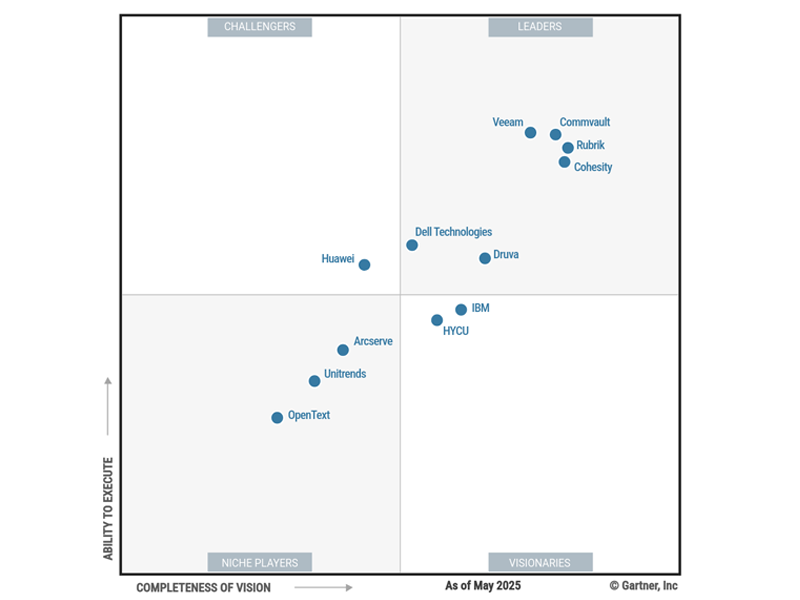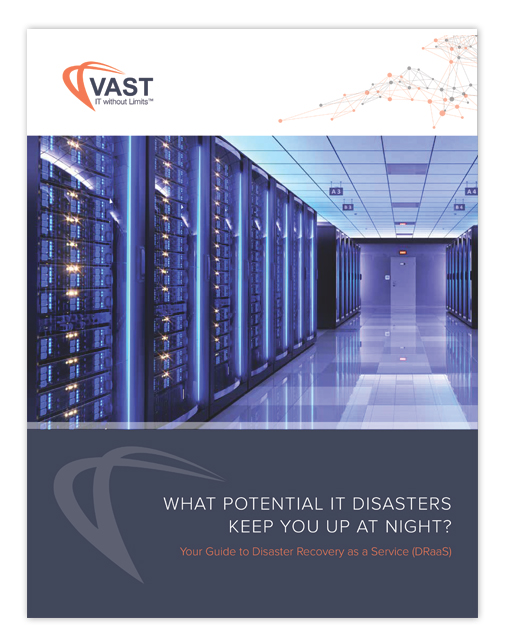This post discusses the information contained in the 2025 Gartner® Magic Quadrant™ for Backup and Data Protection. We will examine the data provided in the report and the methods Gartner employs in its creation. Your company can make informed decisions when selecting backup and data protection technology by understanding the Magic Quadrant.
VAST’s extensive backup and data protection expertise can help you navigate the report and confidently select the right solution for your unique business requirements.
Why Focus on Backup and Data Protection?
Gartner chooses to devote substantial resources to its research on backup and data protection for a very good reason. The argument can be made that backup and data protection are the most critical aspects of a company’s IT strategy for the following reasons.
- Data loss – Backups protect against accidental data loss caused by human error, faulty software, or hardware failure.
- Cyberthreats – Companies must have reliable backups available to recover from a ransomware or other type of cyberattack.
- Disaster Recovery/Business Continuity – Viable backups are a vital component of disaster recovery and business continuity plans.
- Regulatory compliance – Organizations subject to data privacy and security regulations, such as HIPAA or PCI-DSS, must create and retain backups to demonstrate compliance.
- Record archiving – Backups can be crucial for archiving records related to business and legal activities.
What is the Gartner Magic Quadrant Report?
Gartner has a proven track record of delivering quality research in the technology sector. Magic Quadrants are annual reports created by Gartner that cover a wide range of technology solutions and vendors. Gartner designs the reports to help organizations invest in technologies that align with their enterprise data protection requirements. We will concentrate on the Magic Quadrant for Backup and Recovery.
The 2025 report makes several strategic planning assumptions regarding how businesses back up and protect their valuable data. Gartner predicts the following increases in the percentage of companies using specific types of data protection solutions and services from 2025 to 2029.
- The use of a common backup and recovery solution for both on-premises and cloud infrastructure is expected to increase from 25% to 75%.
- Prioritizing the backup of SaaS applications is expected to increase from 20% to 80%.
- Backup-as-a-Service (BaaS) adoption is expected to increase from 25% to 85%.
- The use of backup solutions with embedded cyberthreat detection technology will rise from 55% to 95%.
The Magic Quadrant is a forward-looking document that incorporates these assumptions when categorizing vendors and solutions. At VAST, we believe in designing data protection solutions that keep your environment safe today and in the future. We offer a BaaS solution capable of backing up your entire infrastructure to virtually limitless cloud storage.
What Features Are Considered for the Report?
Gartner defines backup and data protection platforms as technology solutions that create point-in-time copies of enterprise data, allowing it to be recovered in the event of data loss or other business initiatives. Vendors can offer the technologies as software, integrated appliances, or hosted as a service (BaaS). The solutions must protect enterprise data, infrastructure, and applications in hybrid, multicloud, and SaaS environments.
Solutions included in the Magic Quadrant must have these mandatory features:
- The ability to back up data and systems across hybrid, multicloud, and SaaS environments;
- Recovery capabilities to recover from data loss and support enterprise business requirements for recovery point objectives (RPOs) and recovery time objectives (RTOs);
- Integration with immutable backup storage solutions;
- Cyber recovery readiness capabilities, including post-backup anomaly detection;
- A centralized console to manage the distributed backup solution infrastructure across all environments.
Gartner also describes features that are common to many solutions, including:
- Protection of mission-critical data in cloud provider platforms, such as databases and SaaS applications;
- Protection for edge and remote offices and endpoints;
- Generative AI features to streamline administration, backup processes, and recovery procedures;
- Application of zero-trust principles to protect the solution from unauthorized users;
- Orchestration of disaster and recovery testing and processes.
What Are Gartner’s Evaluation Criteria?
Gartner places vendors or solutions included in the Magic Quadrant based on two evaluation criteria.
Ability to Execute
The following factors contribute to a vendor’s ability to execute.
- The product or service is assessed and its capabilities are evaluated in terms of their ability to support various market use cases, including protecting diverse IT environments, ransomware protection, and disaster recovery.
- Overall viability looks at the vendor’s key financial metrics, staffing, and customer base growth.
- Market responsiveness examines the vendor’s ability to deliver first-to-market products or those that differentiate from the competition.
- Sales execution and pricing assess the vendor’s success in the market.
- Marketing execution measures a vendor’s ability to expand into new markets and establish a sales pipeline.
- Customer experience evaluates the vendor’s record in delivering positive customer experiences when using their product.
Completeness of Vision
Vendors are also evaluated regarding their completeness of vision using the following factors.
- Market understanding examines the vendor’s knowledge of current trends and the alignment of their product with customer requirements.
- Marketing and sales strategy ensures the vendor has a clear marketing vision and the ability to reach customers directly and through its partners.
- Product strategy evaluates product planning and emphasizes improving existing capabilities and addressing any known shortcomings.
- Innovation examines the vendor’s strategy for reinvestment to deliver innovative solutions.
- Industry and geographic strategies are evaluated to assess the vendor’s ability to deliver general and industry-specific solutions across the four major geographies: North America, EMEA, Asia/Pacific, and South America.
How Does Gartner Categorize Technology Providers?
Gartner categorizes technology providers into four categories for the Magic Quadrant.
Leaders
These companies have the highest combined measures of Ability to Execute and Completeness of Vision. Leaders have a proven track record and are well-positioned for future success.
Challengers
These vendors can execute today, but often have a more limited vision than Leaders. The question for challengers is whether they understand market trends and the requirements for long-term success.
Visionaries
A visionary is forward-thinking and typically ahead of the market, but may lack the overall execution of Leaders or Challengers. These vendors offer innovative products that cannot sustain broad sales and marketing.
Niche Players
Companies designated as Niche Players focus on a subsegment of the overall market, which may align with a company’s objectives and requirements. They may focus on specific vertical markets or geographic areas.
VAST’s experienced technical team can help determine the right solution for your business. Your company may be best served by a niche player focused on your industry. In some cases, a competitor listed as a challenger may outperform a leader when evaluated against your needs. We can ensure you don’t opt for a suboptimal solution that may put your data at risk.
How Can VAST Enhance Your Data Protection?
VAST’s data protection experts understand your need to leverage advanced technology to safeguard your IT environment. Traditional backup solutions cannot effectively protect today’s complex infrastructure. Your business needs to deploy a modern data protection strategy or risk devastating data loss.
We partner with many of the vendors on Gartner’s Magic Quadrant. Our experience with those vendors gives us additional insight and perspective on their strengths and potential weaknesses. We can help you design and implement a backup and data protection strategy that incorporates the top market solutions and aligns with your unique business requirements.
Contact our data protection team today and begin protecting your data with the right technology for both today and the future.



